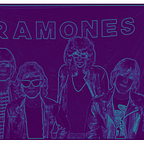Counting on your fingers isn’t cheating. Even Einstein used his.
I have no idea if Einstein counted on his fingers to discover his theory of relativity, but do you remember having a hard time counting to 10 as a kid? Both hands would come out, and one by one, each finger would extend. Mouthing the words — one…two…three…
As we got older, we were told to do the math in our heads or quietly scribble down the numbers. For some reason, this is the first time math got hard. It was easy to think about 5 toys and then take away 3. Then all of a sudden letters were appearing in our math classes. Our teachers would use strange word problems such as —
Billy has 400 candy bars and gives 150 to Rebecca. If each candy bar costs $4, how rich are Billy’s parents?
This was the period in our lives when we started to fit into one of three categories:
- The weird ADHD kid eating a dry-erase marker because math takes too long to focus.
- The quiet kid in the corner reading “The Complete Works of William Shakespeare” at age 5 who only cares about Billy if he goes by Bill Shakespeare.
- The nerdy kid in the front of the class who tucks in his shirt and his calculator is one of his favorite toys (I may or may not fall into this category).
For two out of the three of these kids, the word problems in math became very difficult, and introducing letters into equations was the push we needed to say adios to algebra. Need proof? Check out what Edweek has to say about this: A helpful source about why word problems are hard.
I would bet the keys to my awesome 2016 Mazda CX-3 Sport Edition that no teacher was explaining why we even needed to count in the first place. Instead, we received times tables, practice problem after practice problem, and no shortage of what could only be described as a riveting read: McDougal Littell Algebra 1 Concepts and Skills… 💤 💤💤.
Why Do We Count?
Nobody knows the exact date we woke up and started counting, but according to some pretty smart people, we can trace this back nearly 40,000 years. Keeping track of what’s in front of or around us helps us remember. Our ancestors would carve lines into wood or bone to make a “tally”. It’s crazy to think that the tally mark has outlasted giant sloths, the Roman Empire, and the acting career of Sir Michael Caine.
Tallying, along with painting, was our first effort to remember things!
Pop quiz time! Do you know what looks like a tally mark? How about our fingers? There is a good reason we add, subtract, multiply, and divide in base 10 (Although there were a few other systems; however, that’s not important right now).
This naturally built up, evolving with us from our time sporting a mad unibrow and an overbite to when we could stand and look over all our sheep. There was a problem with our system at this point — what happens when we have more than 10 sheep? We could keep making tallies; however, that could be a lot of notches in a piece of wood.
Proudly our big-brained species invented numbers. Game changer. We had to create a few rules on how this worked differently from tallies, but wow, so much faster. (I’m ignoring Roman Numerals because while many genius ideas came out of Rome, this was not one of them. Sorry Caesar — big fan of your salad dressing and aqueducts!)
This opened up a whole new world of options — imagine how many sheep we could count! We even introduced currency since there was a way to keep track, but as every Debbie Downer knows, there is a problem for each solution. While working with large numbers, how do we make changes or count when we run out of fingers and tallies?
Great, we can count things. Now what?
That's a good question! We slowly invented algebra and geometry to try and solve harder problems than counting sheep.
